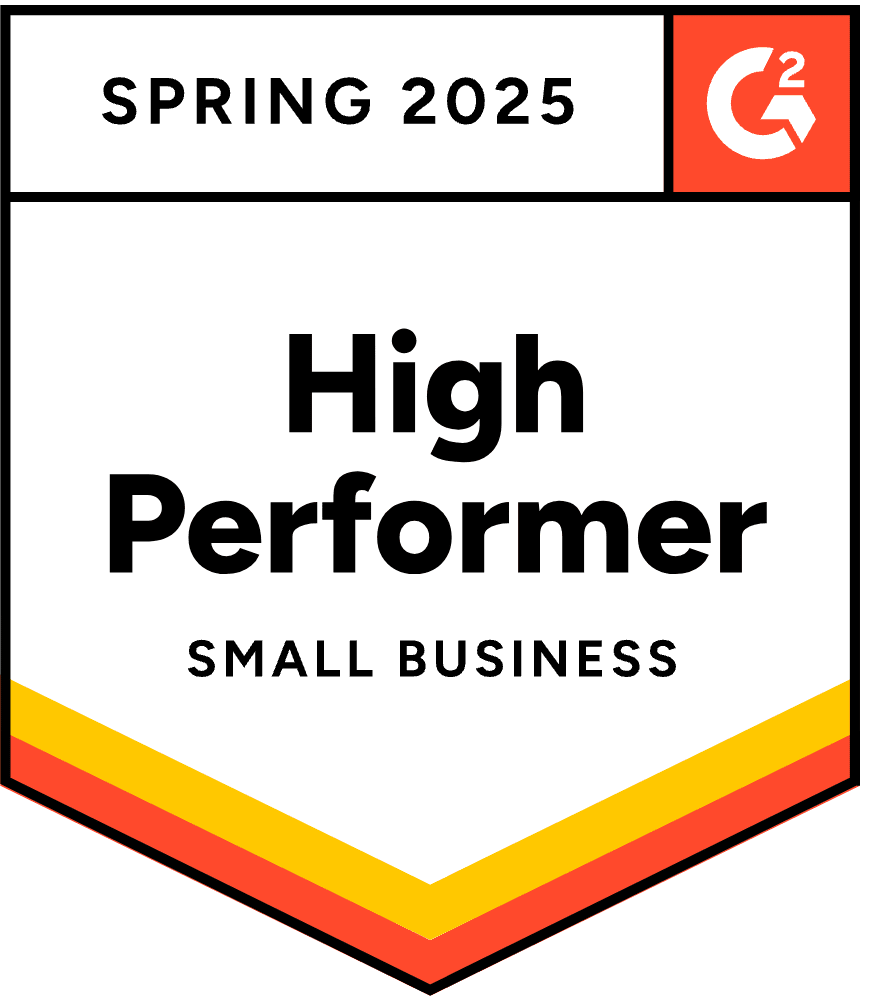- Blog
- Native’s Marketing Playbook: How a Deodorant Brand Went From 3D Renders to Retail Giants
Native’s Marketing Playbook: How a Deodorant Brand Went From 3D Renders to Retail Giants
Table of Contents
Ever feel like you’ve got a great product idea but zero clue if people will actually buy it?
That’s exactly where Native started. No product. No warehouse. Not even a prototype—just a few slick 3D renders and a strong gut feeling.
Fast-forward a few years, and Native is now stocked in Target, Whole Foods, and Walmart. Their secret? A marketing strategy so dialed in, it’s practically a case study in DTC brand building.
Let’s break down how they did it—step by step.
Step 1: Test demand before you build
Before pouring time and money into production, Native took a different route: they tested demand before building the product.
They listed their idea on Product Hunt, ran pre-order campaigns, and kept the setup lean.

No massive product runs. No bloated inventory. Just enough to gauge real interest.
The founder, Moiz Ali, used these early tests to figure out what customers actually wanted. Turns out, Coconut & Vanilla stole the show—so that’s what they built the formula around.
Plus, they initially focused on DTC only. This gave them total control over brand messaging, pricing, customer experience, and margins. No middlemen. No compromises.
Step 2: Listen to your customers (like, really listen)
Here’s where most brands mess up: they build something, throw it out into the world, and hope for the best.
Native? They made feedback part of the process from day one.
Moiz personally emailed every early customer. He asked for input, then actually acted on it—tweaking the formula, redesigning packaging, and even responding to calls for plastic-free options.
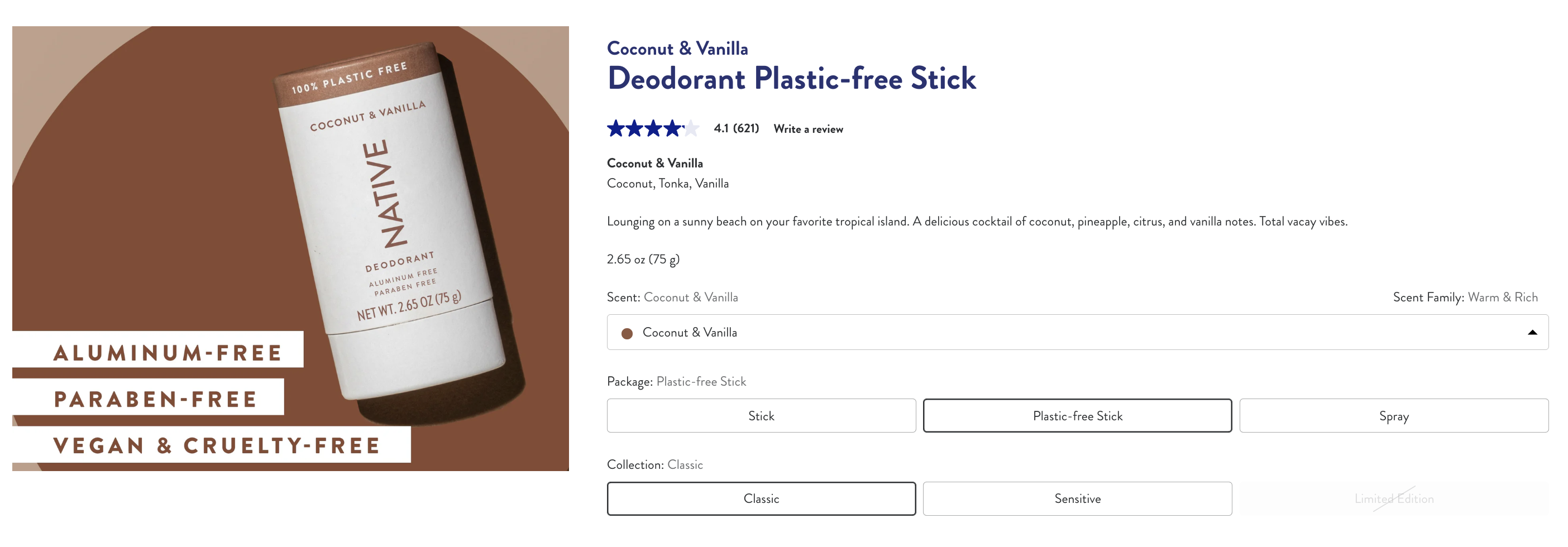
This constant refinement led to true product-market fit—and wildly loyal fans.
In fact, Native boasts a ~50% repeat purchase rate. That’s not just impressive…that’s obsession-level retention.
Step 3: Run paid ads with relentless testing to maximize ROI
Paid media became Native’s growth engine.
They tested everything, including:
- ad copy
- colors
- images
- calls-to-actions
…and so on. If it didn’t perform, it didn’t stay.


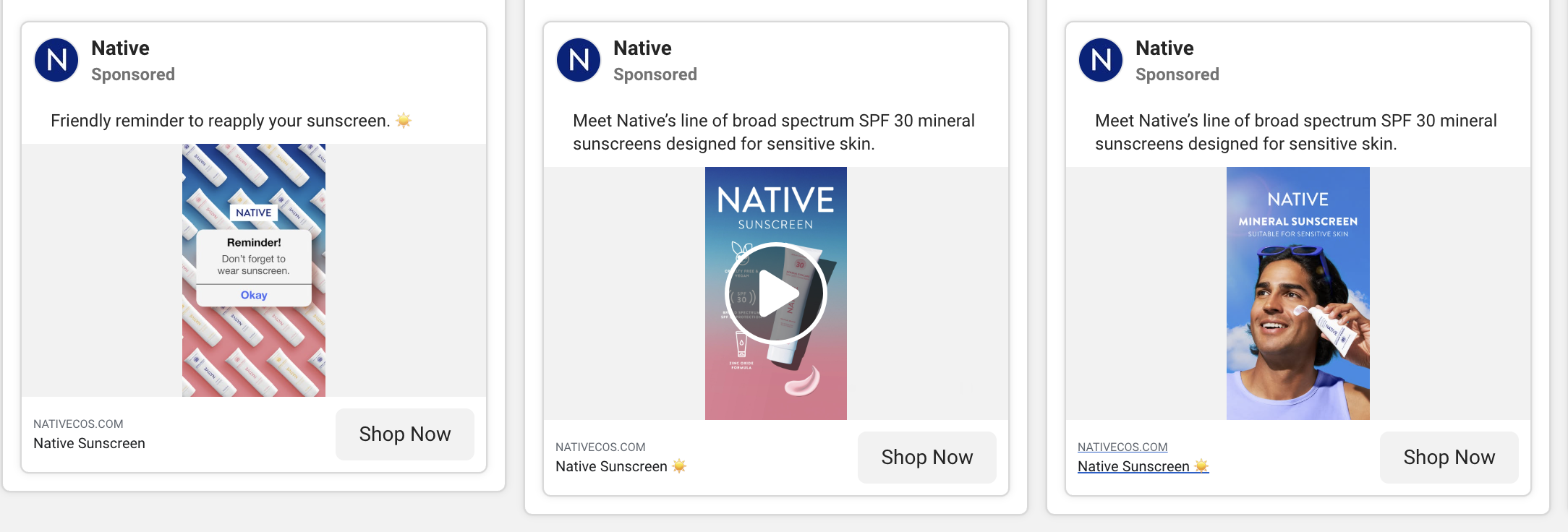
Facebook and Instagram took the lead, with ads laser-focused on clean beauty enthusiasts. And they made a wise move by leaning into their hero scent—Coconut & Vanilla—to hook first-time buyers with something proven to convert.
The goal? Lower customer acquisition cost (CAC), boost ROI, and scale with confidence.
Step 4: Create a scalable influencer strategy
Native developed a strong influencer program, particularly on YouTube, starting with a small group of creators and scaling to publish over 100 videos monthly.
This program has driven millions in sales and increased brand awareness across North America, Europe, and Australia.
They targeted creators in relevant niches (vegan, self-care, lifestyle, etc.) to efficiently reach their audience. They sent free products, promo codes, and media kits to bloggers early on, creating organic reviews and word-of-mouth buzz.
Step 5: Expand to retail and traditional ads (at the right time)
After locking down the DTC game, Native went retail—but only when they were ready.
They struck deals with Target, Walmart, Amazon, and Whole Foods, instantly increasing their reach to more mainstream audiences.
@savingwithshayna This could be a hit or miss but i had to let yall know!! Its too good Deals valid 6/23-6/29 #targetcouponing #targetcircle #targetcircledeals #targetcircleapp #targetcircleoffer #targetdeals #targetdigitaldeals #targethouseholddeal #targetdealhunter #targetcouponer #dealhunters #howtocoupon #savingwithshayna #couponshopper #stockpile ♬ In Love With You - BLVKSHP
But they didn’t stop there. They layered in:
- TV spots,
- podcast ads, and even
- direct mail campaigns.
This shift helped reach broader audiences—including suburban shoppers less inclined to buy online—ensuring products didn’t gather dust on retail shelves.
Step 6: Drive repeat sales with subscriptions
You know what’s better than a one-time purchase? Predictable, recurring revenue.
Native introduced a dead-simple subscription model: 25% off and automatic refills. No more running out of deodorant.
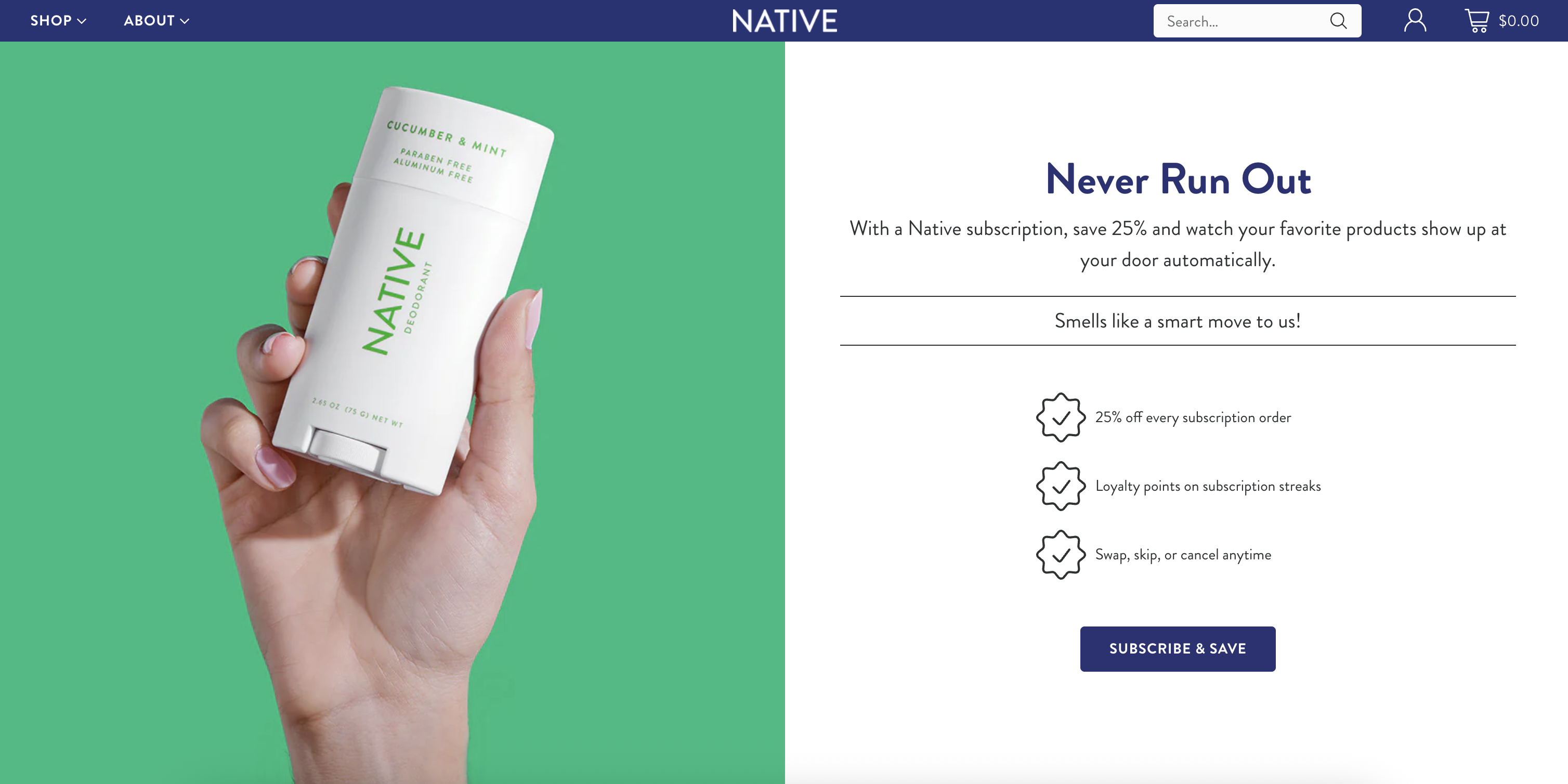
It reduced churn, improved retention, and built habits. And yes, they sweetened the deal with a loyalty program, rewarding customers for sticking around.
Smart move.
Step 7: Strengthen the funnel with SEO
SEO usually means blogging your heart out. But Native flipped the script.
They built high-performing product pages optimized for both branded and non-branded keywords—like “deodorant for sensitive skin” and “moisturizing body wash.”
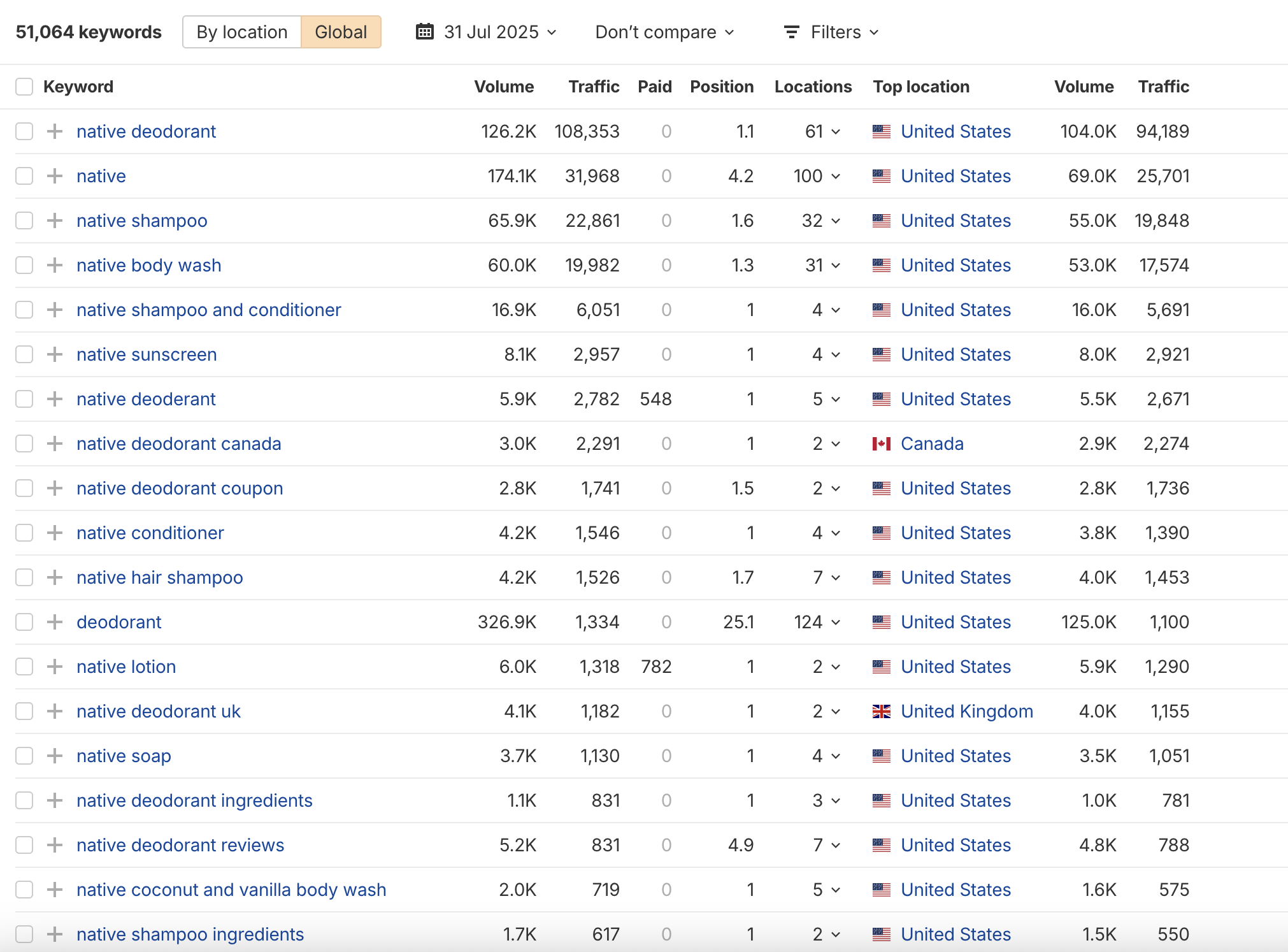
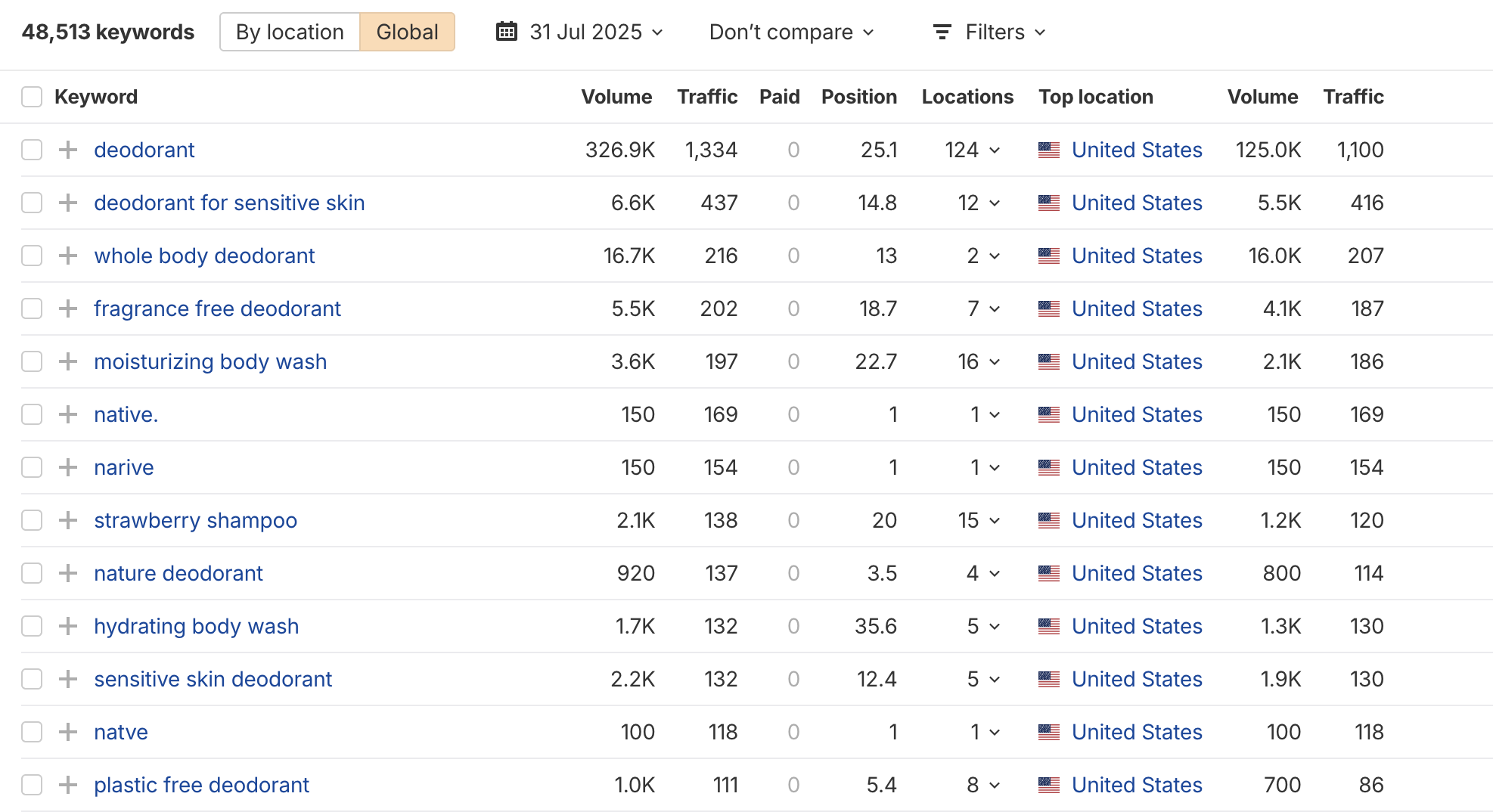
Result? Over 50,000 organic keywords and a domain rating of 72. Without a single blog post.
That’s what happens when your product pages pull double duty: sell and rank.
Step 8: Create buzz with limited edition collabs
Just when things could’ve gotten stale, Native kept it fresh with limited-edition drops.
Think collabs with Jungalow, Dunkin’ Donuts, and even Girl Scout Cookies.
These collections added novelty, fueled urgency, and got people talking. Plus, their “no aluminum, no parabens” branding stayed front and center—proving clean doesn’t mean boring.
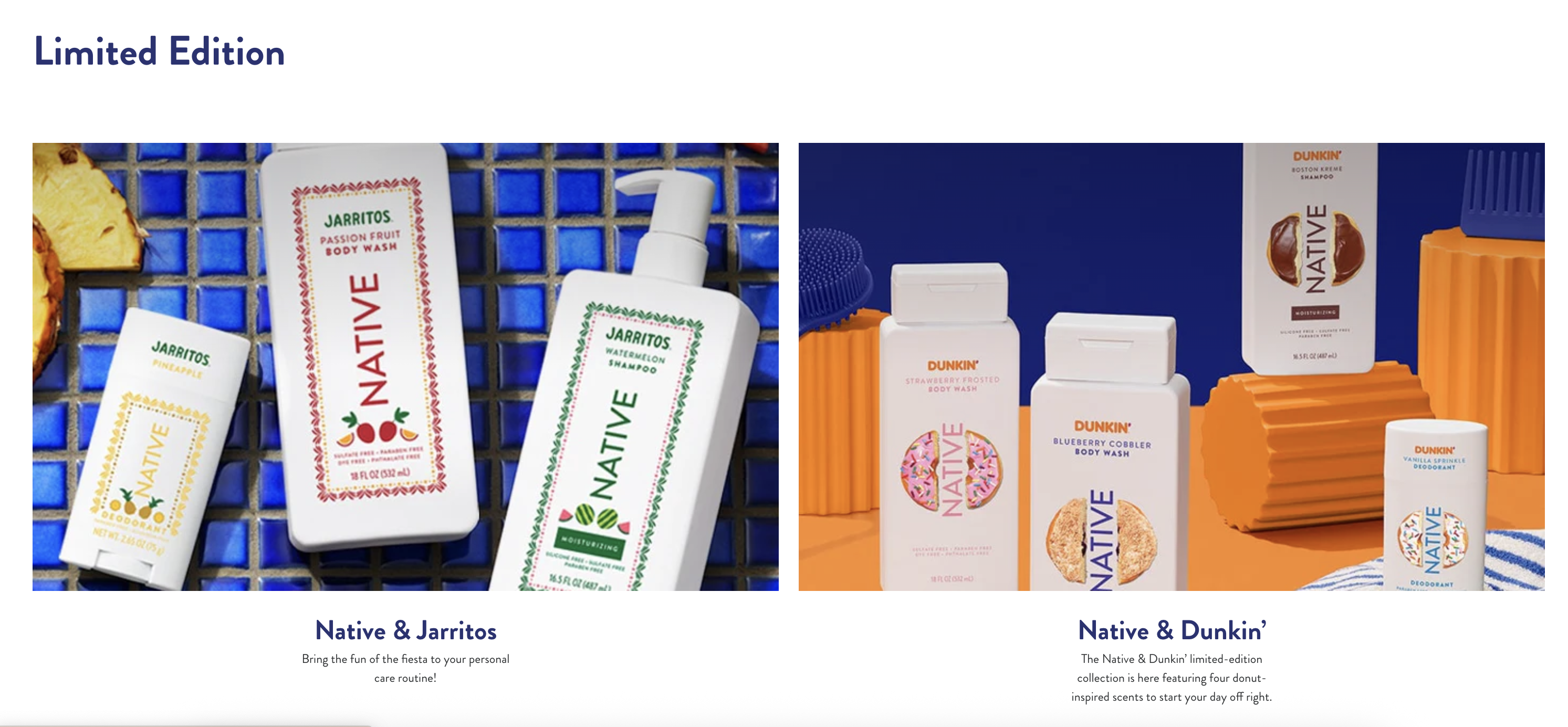
Wrapping up
Native’s journey isn’t about one viral hack. It’s about executing the basics better than anyone else:
- Validating before you build,
- Obsessing over your customers,
- Testing like your CAC depends on it (because it does),
- Building influencers into your system,
- Scaling smart—not fast,
- Locking in loyalty with subscriptions,
- Letting SEO do the long-term work, and
- Keeping people curious with fresh drops.
If you’re building your own DTC brand, this is a playbook worth stealing.
Learn more
Looking for more marketing breakdowns? Check out these articles:
- Tangle Teezer Marketing Breakdown: Lessons in Modern Brand Building
- Ryze Marketing Breakdown: A Smart, Community-Fueled Brand That’s Scaling the Right Way
- OPI Marketing Playbook: How the Brand Nailed Modern Beauty Marketing
- Bombas Marketing Breakdown: How They Turned Socks Into a Social Movement?
- Olaplex Marketing Secrets: How a Beauty Brand Built a Billion-Dollar Buzz
- Goop Marketing Breakdown: How They Turned Content and Controversy Into a Cult Brand
Migration has never been easier
We made switching a no-brainer with our free, white-glove onboarding service so you can get started in the blink of an eye.
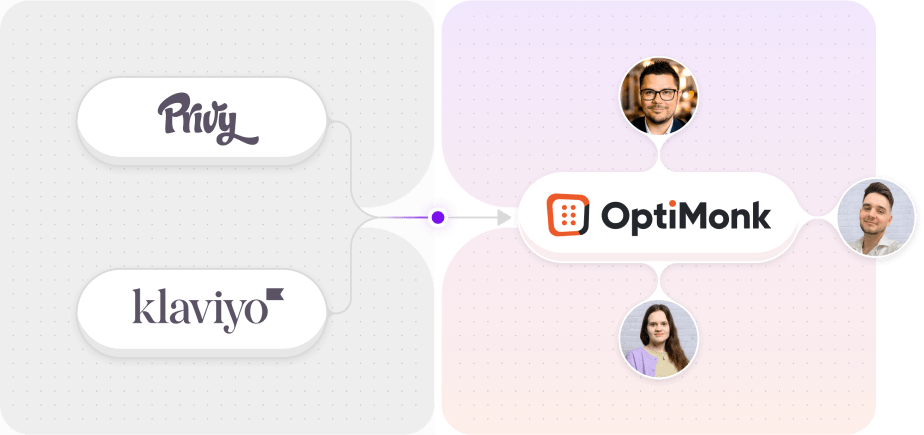
What should you do next?
Thanks for reading till the end. Here are 4 ways we can help you grow your business:
Boost conversions with proven use cases
Explore our Use Case Library, filled with actionable personalization examples and step-by-step guides to unlock your website's full potential. Check out Use Case Library
Create a free OptiMonk account
Create a free OptiMonk account and easily get started with popups and conversion rate optimization. Get OptiMonk free
Get advice from a CRO expert
Schedule a personalized discovery call with one of our experts to explore how OptiMonk can help you grow your business. Book a demo
Join our weekly newsletter
Real CRO insights & marketing tips. No fluff. Straight to your inbox. Subscribe now
Nikolett Lorincz
- Posted in
- Marketing Breakdowns
Partner with us
- © OptiMonk. All rights reserved!
- Terms of Use
- Privacy Policy
- Cookie Policy

